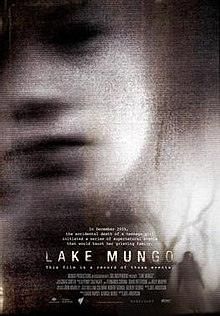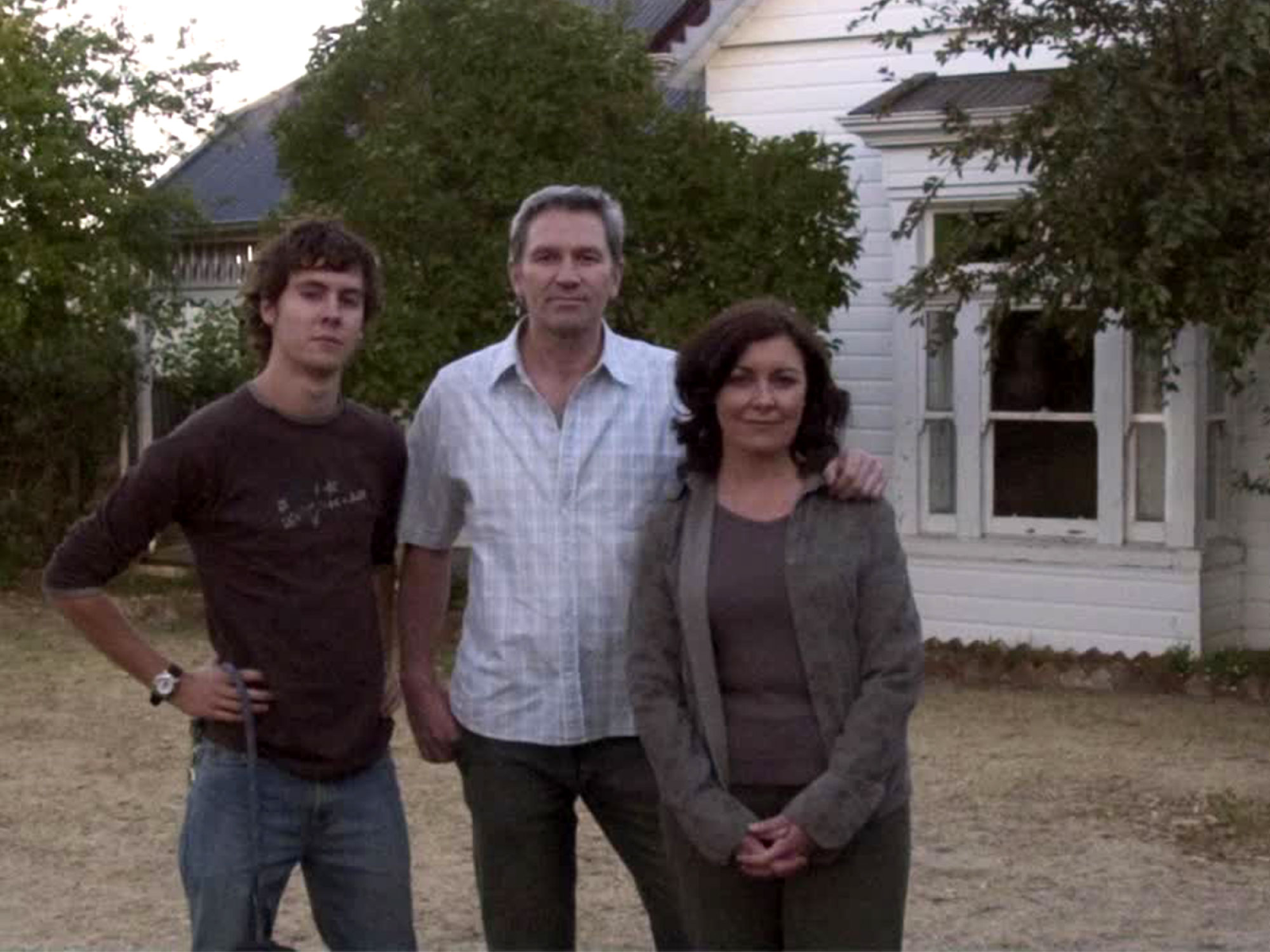You all know me. Effects driven horror and horror movies that I would like to be in because the movie is fun are my thing. This is not that. Stuff like this is not really my favorite. That being said, I did moderately enjoy this. This seems inspired by both found footage and Japanese ghost horror stories. Like the Japanese movies it revolves around the mystery of a ghost revealing itself and whether it is malevolent or not. What I liked about this was getting to know Alice from every perspective. Her parents, grandparents, friends, and people around her family. The movie was more psychological than supernatural in how it dealt with the ghost. The relatable grieving moments provided riveting drama. Instead of the movie revolving around the ghost it revolved around how the family felt about it. The ghost was more of a symbol of their grief, and of them not being able to get closure. This movie still has its scary ghost moments though. The use of more VHS footage for those scenes only enhanced how scary it was. Through getting to know everyone more I liked the characters more and more throughout and this would qualify as a more character driven horror movie. Something I like.
Synopsis: Alice drowns while swimming and her family begins experiencing inexplicable events in their home. The family hires a parapsychologist whose investigation unveils Alice's secret double life and leads them all to Lake Mungo.
What I liked about the movie early on was how much it leaned into the mockumentary and documentary fiction elements. There are VHS tapes used for some family video footage, HD cameras for the interviews, and some television news footage from the time. The filmmakers took care in wanting you to really think this was a documentary with found footage between the interviews. While other horror movies have employed some of these tactics, like CARRIE (2002) for example, that uses police interviews as part of the story. THE MEDIUM also employs interview tactics and found footage but you know that film is cinematic while you watch it. This was one of the first horror movies I have seen to have completely documentary style filmmaking with some found footage in there. I was more interested in the characters and what they were saying at times rather than what was on screen. There are many times where the film will cut to long shots of the area where the film was made, tracking shots of the Palmer's house, and then another interview close up. There is not much interesting filmmaking here from a visual perspective but it could pass as an A&E or Discovery documentary.
A lot of people around Alice's life were interviewed. What I liked was seeing how people were more candid to talk about Alice and the Palmers after her death. That felt real, especially with her being so young and dying as tragically as she did. The moment where Russell's friend at work talks about how he seemed the same at work after Alice's death was relatable. When my grandfather was dying I still went to work the night I found out about it. The way I see it your mind is so used to doing those activities that it can keep your mind off of how you feel about someone's death. June had nightmares about Alice and would sleepwalk into other people's houses. All of that seemed real and relatable. They establish early on that June wants to exhume the body. At the same time the family starts seeing what they believe is Alice in the background of someone else's video at the Ararat dam. More footage is seen of her in Mathew's videos and her reflections are seen in mirrors.
SPOILER SECTION
It was an unexpected development when the video with Alice in the background is revealed to be someone else. Just as unexpected as when Mathew reveals he doctored all of the videos and pictures from his camera with Alice in the background. I enjoyed his process about how he did that as well. I also liked all the slow zoom shots on Alice in the background. The second half of the film is more about the family and anyone involved with Alice revealing secrets, sometimes about themselves and more reveals about her. Mathew doctored those videos in order to get Alice's body exhumed so his mother would have closure. Meanwhile, Ray, a psychic who has been treating June and helping her with her nightmares was revealed to have consulted with Alice months before her death. It is later revealed in one of Mathew's videos, another person in the background of Alice's room. That turns out to be Brett Toohey, the patriarch of a family Alice had babysat. He was looking for a video that June later finds of him and his wife having a threesome with Alice.
These are unexpected developments in the second half. Once again you get everyone's perspective on this. The documentarians talk to Alice's boyfriend and her friends about what they think of Alice and Brett after this. Ray talks about his oath to confidentiality and how he wanted to help the family and could not if they knew he was seeing Alice. It also deals with a real thing, that things are revealed about people after they die. Sometimes you may like those things, and sometimes people may not. Still it felt real. I've thought about how people might feel about me if I died tomorrow. This movie dealt with the death of one character in a more real way. It wasn't cinematic. Later June finds Lake Mungo written in Alice's diary. Alice had gone to Lake Mungo on a field trip and came back home without her watch, cellphone, and her favorite bracelet. The family decides to investigate. Using cellphone footage from Alice's friends they at one point saw her burying something and wandering off on her own. They eventually find the buried items, which were the items Alice did not come home with. In the film's scariest moment, footage from Alice's cellphone reveals her double, looking waterlogged, identical to when they found her body at the dam.
After the family discovers this they start to heal. So finding out Alice's secrets and what she saw really helped give them closure. I found that interesting and I found how the film built to all these different reveals to be interesting. The end of the film shows Alice present in some different angles of Mathew's pictures. That was interesting only because it showed that some of the supernatural stuff, while again not malevolent, was really there. People who are religious talk about how people can see them or help them in the afterlife. This felt like a version of that. There were some interesting themes in this movie as well. Teenage sexuality, confidentiality, and how different people react to grief and bereavement. The mixing of the found footage with the interviews works for me because each one gave a break from the other. If the film was all one or the other it could have gotten boring. It reminded me of Japanese horror movies because of the mystery. Was the ghost real or not? You can see different things in the background, oftentimes with the use of VHS footage, in Japanese films as well. ONE MISSED CALL is an example of a film that uses cell phones for the ghost in the film. This has the ghost on video taken on a cellphone. So there is overlap and I think my love of Japanese horror helped me enjoy this more. That and not knowing any of these actors. Had these people been more familiar to me it would have been hard to suspend my disbelief.
Rating: 7/10. Rewatchability is a big part of my ratings. I could see myself watching this again, just not anytime soon. There is a reason why I would give a movie like REQUIEM FOR A DREAM a 6/10. It's a great film but I'll never watch it again. This movie was not my favorite thing but I could watch this again at some point.
Trivia: Director Jordan Peele stated in a podcast with Keke Palmer that LAKE MUNGO is one of the films that scared him the most.
Full movie: https://www.youtube.com/watch?v=7X6cpVlW1as



No comments:
Post a Comment